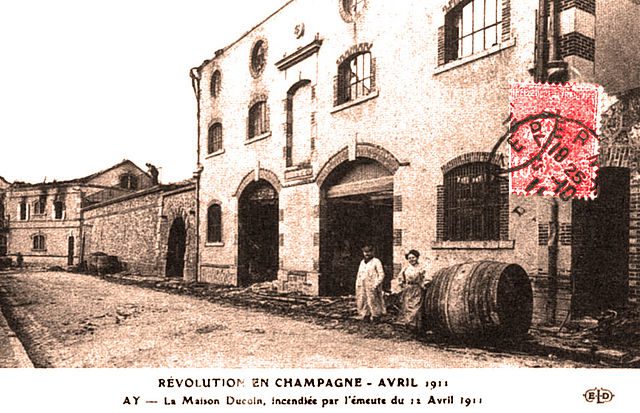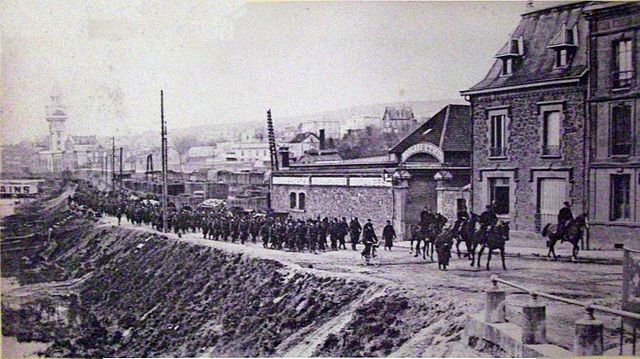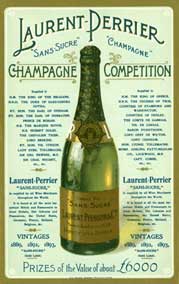By Cali Slair
 Since the twentieth century champagne has widely been seen as inherently French both in France and abroad. In When Champagne Became French, Kolleen M. Guy takes a close look at how this regional sparkling wine came to represent French national identity. Guy not only shares the history of the champagne industry, focusing on the years 1820-1920, but also details the organic qualities of the Champagne region that are believed to contribute directly to the quality of champagne.
Since the twentieth century champagne has widely been seen as inherently French both in France and abroad. In When Champagne Became French, Kolleen M. Guy takes a close look at how this regional sparkling wine came to represent French national identity. Guy not only shares the history of the champagne industry, focusing on the years 1820-1920, but also details the organic qualities of the Champagne region that are believed to contribute directly to the quality of champagne.
In contrast to its signature feature, the story of how this wine became a protected product by the French government is far from sparkling. When Champagne Became French is a story of internal and external conflict. Guy details conflicts between wine-merchants and vineyard owners and workers over the qualities that determined champagne’s authenticity: regional traits or the brand names and processes that were unique to the wine-merchants. In 1911, riots broke out among vineyard owners and vineyard workers in the Champagne region over the lack of formal boundaries marking the areas that contained grapes that could be used in wines labelled and marketed as champagne. Class-based antagonism between wine-merchants and vineyard workers also contributed significantly to the escalation of this conflict. In addition, the success of the French champagne industry was threatened by foreign makers of sparkling wine who tried to sell their wine as “champagne.”
What makes the story of When Champagne Became French historically compelling is Guy’s detailed account of how champagne came to be known as French and how the French saw champagne as representative of their glory and sophistication. French wine-makers presented the protection of the name champagne and the importance of the Champagne region to champagne making as a national issue. One thing on which the wine-merchants and wine-makers could agree was that the French champagne industry needed the French government’s protection to combat foreign or fraudulent champagne. In this way, protecting the elite status and authenticity of champagne that came from the Champagne region became linked with protecting French national interests.
In telling the story of how champagne came to be associated with French identity Guy discusses various marketing techniques used in the Champagne industry from 1789-1914 which explain how champagne came to be associated with luxury and celebration. She also examines the concept of terroir, the organic properties of the vineyard, that together with the individuality and dedication of the wine-maker, combine to make a region’s grapes unique. She shows how the campaign for champagne set a precedent for associating region, product, and nation in France. After champagne became French so did many other regional products such as brie cheese and bordeaux wine.
When Champagne Became French is not just a great history book; its discussion of wine-making and the wine-industry will impress wine connoisseurs. In fact, it did just that. When Champagne Became French received the 2004 Champagne Veuve Clicquot Wine Book Prize and the 2003 Gourmand International World Book Awards prize for “Best Wine History Book.” This story of the journey of champagne from a regional wine to a national product indicative of modern French identity at home and abroad makes When Champagne Became French an interesting book for all readers.
Kolleen M. Guy, When Champagne Became French: Wine and the Making of a National Identity (Johns Hopkins University Press, 2010)
On French History you may also like:
Ronen Steinberg on Ghosts and the French Revolution’s Reign of Terror
Pierre Minault’s First World War Diary
Other commodity histories:
Elizabeth O’Brien reviews The Deepest Wounds: A Labor and Environmental History of Sugar in Northeast Brazil, by Thomas D. Rogers
Maria José Afanador-Llach recommends Colour of Paradise: The Emerald in the Age of Gunpowder Empires, by Kris Lane (2010)
All images courtesy of Wikipedia


